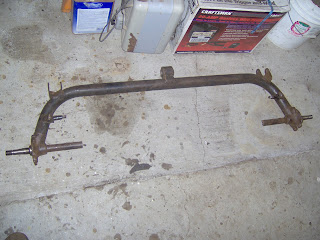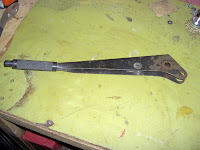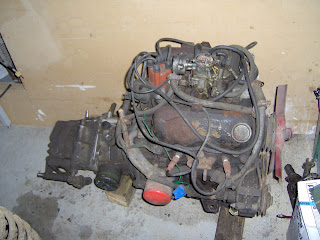Rebuilt the master brake cylinder. The repair kit I received was not quite a perfect set, but had enough of the parts to complete the job. It contained an extra rubber bushing, and an extra plastic washer, but only one of the thin copper washers (and it has the wrong diameter hole). The original copper washers were in good shape though, so I was able to re-use them. There was a lot of petrified gunk in there, but it all cleaned up very nicely.
I had to purchase a punch set and circlip pliers to complete the job. This was one of the most nerve wracking operations to date, as this is one assembly that is no longer available except as salvaged from another vehicle. I was very relieved that the internal workings had very little rust. I had half expected to find a bunch of rusted-together parts. (If you recall, the brakes were not working at all when the car first arrived, and the fluid reservoir was empty.)
I also replaced the seals in the front brake cylinders. That was also a little touch-and-go as the new parts were a VERY tight fit, and it took a lot of finagling to get them to compress the first time. Ran them through several cycles using compressed air until I was satisfied they were working correctly.
I have had packages arriving every day this week! My new shocks are here, as are the rear cylinders and axle limit straps. (It turns out Volvos of the same time period also used the darn things, and the size is similar enough to work.)
I finally resorted to the big guns and took a pipe wrench to those pesky front wheel bearing nuts. Even then, I had to jump up and down on the handle several times to break them loose! Now I need a wheel puller to complete the job. (Sigh.)


























